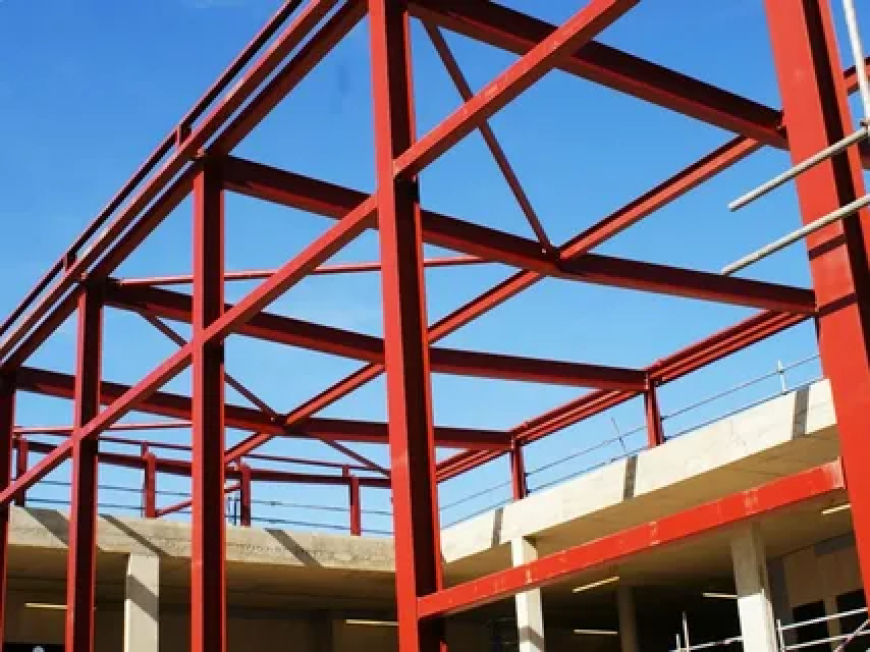Exploring the Potential of Kit Building Industrial Units
kit building
In the realm of industrial development, the concept of kit building industrial units is gaining significant traction. These modular structures offer a versatile and efficient solution for various industrial needs. From small-scale enterprises to large corporations, kit building industrial units present an array of benefits. In this article, we delve into the essence of kit building industrial units, exploring their advantages, applications, and future prospects.
Understanding Kit Building Industrial Units
What are Kit Building Industrial Units?
Kit building industrial units are pre-engineered structures designed for industrial use. They are typically assembled from prefabricated components manufactured off-site. These components, including walls, roofs, and structural supports, are then transported to the desired location for assembly. This modular approach streamlines the construction process, reducing time and labor costs.
How do Kit Building Industrial Units Differ from Traditional Construction?
Unlike traditional construction methods that involve on-site fabrication, kit building industrial units are constructed using standardized components manufactured in controlled environments. This off-site fabrication enhances quality control and ensures consistency in structural integrity. Additionally, kit building industrial units offer greater flexibility in design and can be easily customized to suit specific industrial requirements.
Advantages of Kit Building Industrial Units
1. Cost-Effectiveness
One of the primary advantages of kit building industrial units is their cost-effectiveness. By utilizing standardized components and streamlined construction processes, these units significantly reduce construction time and labor expenses. Moreover, their modular nature allows for efficient use of materials, minimizing waste and associated costs.
2. Rapid Deployment
Kit building industrial units can be assembled quickly, enabling rapid deployment of industrial facilities. This is particularly advantageous for businesses operating in dynamic environments or those with urgent operational needs. Whether it's expanding existing facilities or setting up temporary structures, kit building industrial units offer a swift and efficient solution.
3. Flexibility and Scalability
The modular design of kit building industrial units provides inherent flexibility and scalability. Businesses can easily adapt the layout and configuration of these units to accommodate changing operational requirements. Whether it's adding extensions, reconfiguring interior spaces, or relocating entire structures, the versatility of kit building industrial units facilitates seamless adaptation to evolving needs.
4. Quality Assurance
With components manufactured in controlled environments and stringent quality control measures in place, kit building industrial units offer superior quality assurance compared to traditional construction methods. This ensures structural integrity, durability, and compliance with industry standards and regulations.
Applications of Kit Building Industrial Units
1. Manufacturing Facilities
Kit building industrial units are well-suited for manufacturing facilities across various industries. Whether it's automotive, aerospace, electronics, or food processing, these modular structures provide an efficient and adaptable environment for production processes. From assembly lines to warehousing areas, kit building industrial units can be tailored to meet specific manufacturing requirements.
2. Warehousing and Distribution Centers
In the realm of logistics and supply chain management, kit building industrial units serve as ideal warehousing and distribution centers. Their modular design allows for efficient storage and organization of goods, facilitating streamlined inventory management and order fulfillment processes. Moreover, their scalability enables businesses to expand storage capacity as demand grows.
3. Research and Development Labs
For organizations engaged in research and development activities, kit building industrial units offer a flexible and cost-effective solution for setting up laboratory facilities. Whether it's pharmaceutical research, biotechnology, or materials science, these modular structures provide a controlled environment conducive to experimentation and innovation.
Future Outlook
The future of kit building industrial units appears promising, with continued advancements in design, technology, and sustainability. As the demand for flexible and efficient industrial solutions grows, these modular structures are expected to play an increasingly integral role across diverse sectors. Furthermore, innovations in materials and construction techniques are likely to further enhance the performance and sustainability of kit building industrial units, paving the way for a more resilient and agile industrial infrastructure.
In conclusion, kit building industrial units offer a compelling solution for businesses seeking cost-effective, flexible, and scalable industrial facilities. With their rapid deployment capabilities, superior quality assurance, and versatile applications, these modular structures are poised to shape the future of industrial development.
FAQ
Q: Are kit building industrial units suitable for long-term use?
A: Yes, kit building industrial units are designed for durability and can serve as permanent structures. With proper maintenance and upkeep, they can withstand the rigors of long-term industrial operations.
Q: Can kit building industrial units be customized to specific requirements?
A: Absolutely. One of the key advantages of kit building industrial units is their flexibility in design and customization. Businesses can tailor these units to meet their exact specifications, whether it's size, layout, or functionality.
Q: How environmentally friendly are kit building industrial units?
A: Kit building industrial units can be designed with sustainability in mind. From energy-efficient materials to eco-friendly construction practices, these modular structures offer opportunities for reducing environmental impact compared to traditional construction methods.
What's Your Reaction?
 Like
0
Like
0
 Dislike
0
Dislike
0
 Love
0
Love
0
 Funny
0
Funny
0
 Angry
0
Angry
0
 Sad
0
Sad
0
 Wow
0
Wow
0














































